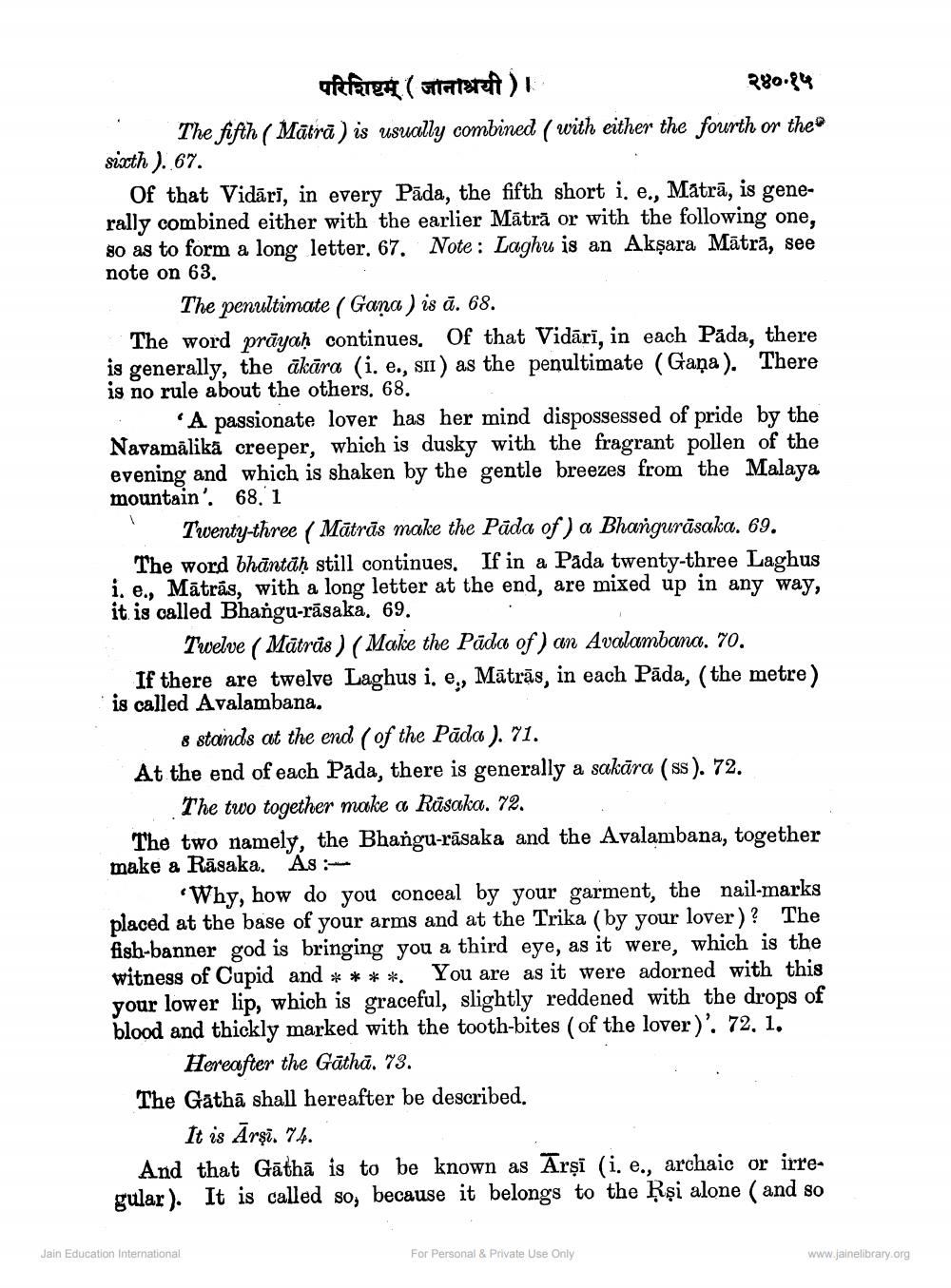________________
affarge ( trataret)
२४०.१५ The fifth ( Mātrā) is usually combined ( with either the fourth or them sixth ). 67.
Of that Vidāri, in every Päda, the fifth short i, e., Matrā, is generally combined either with the earlier Mātrā or with the following one so as to form a long letter. 67. Note: Laghu is an Akşara Mātrā, see note on 63.
The penultimate ( Gana) is ā. 68. The word prāyaḥ continues. Of that Vidārī, in each Päda, there is generally, the ākāra (i. e., sii) as the penultimate (Gaņa). There is no rule about the others, 68.
A passionate lover has her mind dispossessed of pride by the Navamālikā creeper, which is dusky with the fragrant pollen of the evening and which is shaken by the gentle breezes from the Malaya mountain'. 68. 1
Twenty-three ( Mātrās make the Pāda of ) a Bhangurāsaka. 69. The word bhāntāḥ still continues. If in a Pada twenty-three Laghus i, e., Mātrās, with a long letter at the end, are mixed up in any way, it is called Bhangu-rāsaka, 69.
Twelve ( Mātrds ) (Make the Pāda of) an Avalambana. 70. If there are twelve Laghus i. e, Mātrās, in each Pāda, (the metre) is called Avalambana.
8 stands at the end of the Pāda). 71. At the end of each Pada, there is generally a sakāra (ss). 72.
The two together make a Rtásoka. 72. The two namely, the Bhangu-rāsaka and the Avalambana, together make a Rāsaka. As
“Why, how do you conceal by your garment, the nail-marks placed at the base of your arms and at the Trika (by your lover)?! fish-banner god is bringing you a third eye, as it were, which is the witness of Cupid and * ***. You are as it were adorned with this your lower lip, which is graceful, slightly reddened with the drops of blood and thickly marked with the tooth-bites (of the lover)'. 72, 1.
Hereafter the Gāthā. 73. The Gathā shall hereafter be described.
It is Arşi. 74. And that Gāthā is to be known as Ārsi (i. e., archaic or irregular). It is called so, because it belongs to the Rşi alone ( and so
Jain Education International
For Personal & Private Use Only
www.jainelibrary.org




